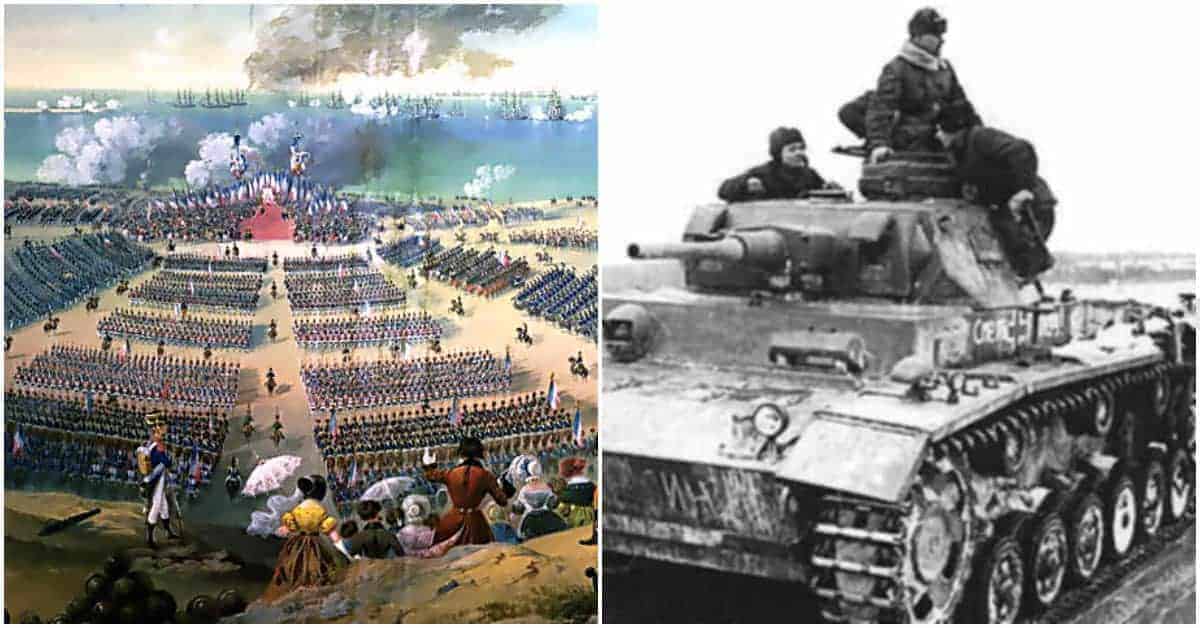History is determined not only by great deeds done but also by deeds not done and courses not taken. Nowhere is that more evident than in warfare, where ambitious and ingenious plans are frequently made, only to be discarded due to changed circumstances, unmet conditions necessary for the plan’s success, or any of a number of variables that could lead to plans not being implemented as originally intended. In hindsight, sometimes the planners would have been better off had they gone ahead and executed their discarded plans, and sometimes it turns out that the planners were wise or fortunate to have shelved the plans or thrown them in the trash can, and tried something else instead.
Following are twelve momentous military plans that were cancelled, but that might have had incalculable and far-reaching consequences had they been carried out, or even attempted, regardless of whether they succeeded or not.
Alexander the Great’s Invasion of Italy
Philip II of Macedon‘s driving ambition was to conquer Persia, but he was assassinated before he could try. His son, Alexander the Great, achieved that goal, conquered the Persian Empire, then pushed beyond Central Asia and into India before his soldiers finally had enough and refused to march any further. Thwarted from further conquests in the east, Alexander began planning to conquer the west, and it is reported that the travels of the pioneering Greek geographer Pytheas, in the 4th century BC, were a scouting trip and spying mission on behalf of Alexander.

Ancient sources disagree on the details, with some contending that Alexander planned to march westwards from Macedonia to Ilyricum, thence into Italy, before continuing on to Gaul and Hispania. Others claim that he had a more ambitious plan to circumnavigate the Mediterranean by land, marching west from Egypt to conquer Libya, Carthage, Numidia, Mauretania, then crossing the narrows near the Pillars of Hercules to invade Hispania, then Gaul, before turning east to conquer Italy, and finally back to Macedon. Either route, Italy, and the small but rising Roman Republic therein, were on Alexander’s agenda.
If Alexander the Great had invaded Italy, odds are he would have won, and in the process perhaps extinguished the Roman Republic when it was still in its cradle. In addition to being one of history’s greatest conquerors, Alexander had in the elite Macedonian phalanx and Companion Cavalry the world’s best infantry and cavalry. Rome at the time was simply not in Alexander the Great’s league (see map above).
In the 2nd century BC, Roman legions bested the Macedonian phalanx in the battles of Cynoscephalae and Pydna, but the Roman legion of the 4th century BC had not yet evolved into the Ancient world’s best military unit. In Alexander’s day, the legion was still a spear-based force, a mixture of Greek and Samnite influences, more akin to the traditional phalanx of Sparta, albeit more flexible, than it was to the 2nd century sword-based legions that conquered Macedonia. Two generations after Alexander, the Macedonian-type phalanx proved superior to the Roman legions during the war against Pyrrhus, a competent general but not Alexander’s equal. Fortunately for Rome, it never had to confront Alexander, for he died in Babylon in 323 BC, not long after his return from India and before he launched his campaign to conquer the west.

